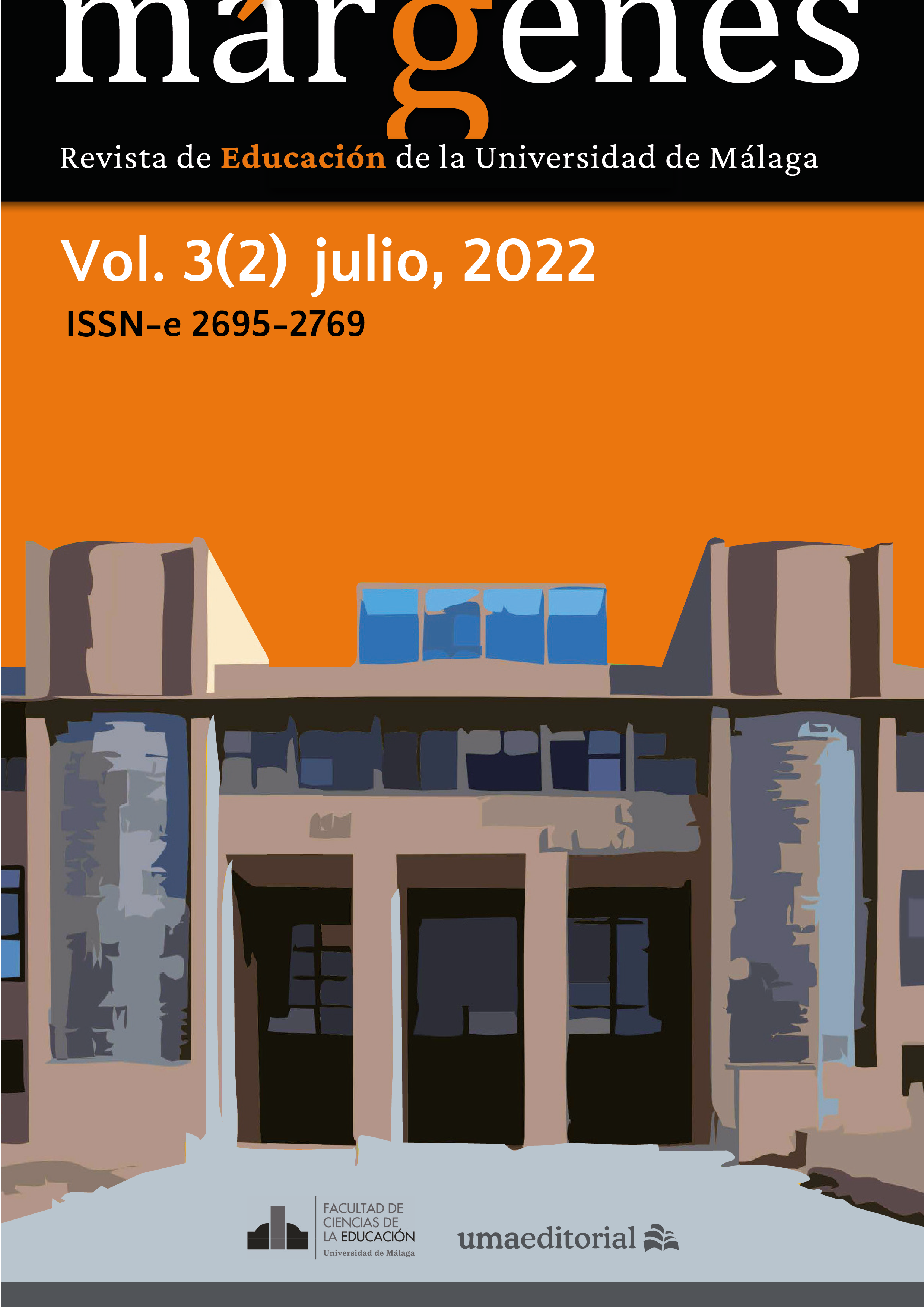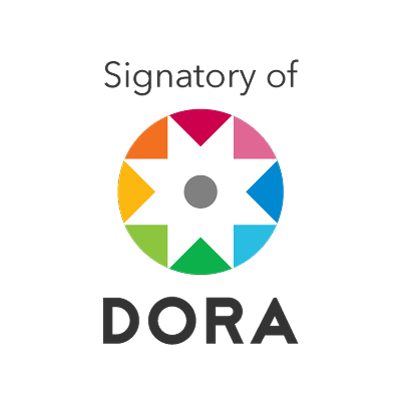Discursos flexibles en torno a las identidades sexuales y de género en la adolescencia: “un sentimiento de cómo te vives”
DOI:
https://doi.org/10.24310/mgnmar.v3i2.13141Palabras clave:
identidad, adolescencia, género, análisis de discursoResumen
Distintas investigaciones apuntan a una transformación actual en los discursos y las culturas de género en población joven. Nuestro objetivo en la presente investigación es analizar el discurso de un grupo de personas adolescentes -con una visión flexible sobre la construcción del género y con un nivel de aceptación social alto en su grupo de iguales- en torno a la identificación con categorías de género. Utilizamos una aproximación cualitativa de análisis del discurso registrado a partir de entrevistas semi-estructuradas. Las personas entrevistadas describieron las categorías mujer/hombre desde distintas dimensiones independientes, destacando la autoidentificación como la dimensión clave para la pertenencia a la categoría. Sus discursos destacan por la resistencia frente a la rigidez, y estatismo del discurso monoglósico, mostrando rechazo contra lo que enuncian como estereotipado y rígido, en una negociación compleja entre el deseo de aceptación social y la búsqueda de formas más flexibles de ser chica/chico.
Descargas
Métricas
Publicación Facts
Perfil de revisores N/D
Información adicional autores
Indexado: {$indexList}
-
Indexado en
- Sociedad Académica/Grupo
- N/D
- Editora:
- Universidad de Málaga
Citas
Anderson, E. (2013). Adolescent masculinity in an age of decreased homohysteria. Thymos: Journal of Boyhood Studies, 7(1), 79-93. DOI:10.3149/thy.0701.79
Anderson, E., y McCormack, M. (2018). Inclusive masculinity theory: Overview, reflection and refinement. Journal of Gender Studies, 27(5), 547-561. DOI:10.1080/09589236.2016.1245605
Ballesteros, J. C., Sanmartín, A., y Tudela, P. (2018). Barómetro Juventud y Género 2017. Centro Reina Sofía sobre Adolescencia y Juventud. Fundación de Ayuda contra la Drogadicción. DOI:10.5281/zenodo.3531923
Ballesteros, J. C., Rubio, A., Sanmartín, A., y Tudela, P. (2019). Barómetro juventud y género 2019: Identidades y representaciones en una realidad social compleja. Centro Reina Sofía sobre Adolescencia y Juventud. Fundación de Ayuda contra la Drogadicción. https://bit.ly/3jiboG0
Bernardos, A. (2018). Rigidez-Flexibilidad de las Categorías Identitarias Mujer/Hombre en la Adolescencia. IV Jornadas de Investigación y PHday en Educación: Retos y Oportunidades de la Investigación Educativa, 14-24. Universidad Complutense, Facultad de Educación. https://eprints.ucm.es/id/eprint/60156/
Bernardos, A., Martínez-Martín, I., y Solbes, I. (2020). Vínculos y comunidad; introducción de la ética del cuidado en educación a través de estructuras participativas. Diversidade E Educação, 8, 195-212. DOI:10.14295/de.v8iEspeciam.9707
Bernardos, A., Martínez-Martín, I., y Solbes-Canales, I. (2021). ‘It depends entirely on the person’: freedom and inequality in Spanish youth gender discourses. Sex Education, 1-13. DOI: 10.1080/14681811.2021.1984223
Blakemore, J. E. O., Berenbaum, S. A., y Liben, L. S. (2009). Gender development. Psychology Press. DOI: 10.4324/9780203889756
Bragg, S., Renold, E., Ringrose, J., y Jackson, C. (2018). "More than boy, girl, male, female": Exploring young people's views on gender diversity within and beyond school contexts. Sex Education, 18(4), 420-434. DOI:10.1080/14681811.2018.1439373
Bussey, K. (2011). Gender identity development. En S. J. Schwartz, K. Luyckx & V. L. Vignoles (Eds.), Handbook of identity theory and research (pp. 603-628). Springer. DOI:10.1007/978-1-4419-7988-9
Connell, R. W., y Messerschmidt, J. W. (2005). Hegemonic masculinity: Rethinking the concept. Gender & Society, 19(6), 829-859. DOI:10.1177/0891243205278639
Cook, J., y Hasmath, R. (2014). The discursive construction and performance of gendered identity on social media. Current Sociology, 62(7), 975-993. DOI:10.1177/0011392114550008
Cover, R. I. (2018). Emergent Identities: New Sexualities, Genders and Relationships in a Digital Era. London: Routledge. https://bit.ly/3jicwte
Edwards-Leeper, L., Leibowitz, S., y Sangganjanavanich, V. F. (2016). Affirmative practice with transgender and gender nonconforming youth: Expanding the model. Psychology of Sexual Orientation and Gender Diversity, 3(2), 165-172. DOI:10.1037/sgd0000167
Endendijk, J., Groeneveld, M., y Mesman, J. (2018). The Gendered Family Process Model: An Integrative Framework of Gender in the Family. Archives of Sexual Behavior, 47(4), 877–904. DOI:10.1007/s10508-018-1185-8
Francis, B. (2012). Gender monoglossia, gender heteroglossia: The potential of Bakhtin's work for re-conceptualising gender. Journal of Gender Studies, 21(1), 1-15. DOI:10.1080/09589236.2012.639174
Francis, B., Skelton, C., y Read, B. (2010). The simultaneous production of educational achievement and popularity: how do some pupils accomplish it? British Educational Research Journal, 36(2), 317-340. DOI:10.1080/0141192090291926
Francis, B., y Paechter, C. (2015). The problem of gender categorisation: Addressing dilemmas past and present in gender and education research. Gender and Education, 27(7), 776 – 790. DOI: 10.1080/09540253.2015.1092503
Frohard?Dourlent, H., Dobson, S., Clark, B. A., Doull, M., y Saewyc, E. M. (2017). “I would have preferred more options”: Accounting for non-binary youth in health research. Nursing Inquiry, 24(1). DOI:10.1111/nin.12150
Goldberg, S. (2017). “We Are in the Midst of a Gender Revolution”. National Geographic Special Issue Gender Revolution, 3-4. https://on.natgeo.com/2VtNL5v
Hyde, J. S., Bigler, R. S., Joel, D., Tate, C. C., y van Anders, S. M. (2019). The future of sex and gender in psychology: Five challenges to the gender binary. The American Psychologist, 74(2), 171-193. DOI:10.1037/amp0000307
Joel, D., Tarrasch, R., Berman, Z., Mukamel, M., y Ziv, E. (2014). Queering gender: Studying gender identity in ‘normative’ individuals. Psychology & Sexuality, 5(4), 291-321. DOI:10.1080/19419899.2013.830640
Jones, T., Smith, E., Ward, R., Dixon, J., Hillier, L., y Mitchell, A. (2016). School experiences of transgender and gender diverse students in Australia. Sex Education, 16(2), 156-171. DOI:10.1080/14681811.2015.1080678
Martín-Babarro, J., Martínez-Arias, M. R., y Díaz-Aguado, M. J. (2008). Programa Iesocio para la prevención del acoso escolar. Psicología Educativa, 14(2): 129-146. https://bit.ly/3rSY1Qw
Martín, V. R., García, E. M., y Calvo, S. M. (2020). Desigualdades y violencias de género en jóvenes y adolescentes: ¿soplan vientos de avance? Prisma Social, 31, 368-387. https://bit.ly/3tFzLEt
Martínez-Marín, M. D., y Martínez, C. (2019). Negative and Positive Attributes of Gender Stereotypes and Gender Self-Attributions: A Study with Spanish Adolescents. Child Indicators Research, 12(3). DOI:1043-1063. 10.1007/s12187-018-9569-9
Martínez Martín, I., y Ramírez Artiaga, G. (2017). Des-patriarcalizar y Des-colonizar la Educación. Experiencias para una Formación Feminista del Profesorado. Revista Internacional De Educación Para La Justicia Social (RIEJS), 6(2). DOI:10.15366/riejs2017.6.2.005
Missé, M. (2020). A la conquista del cuerpo equivocado. Editorial Egales. https://bit.ly/3AobUcP
Mosteiro García, M. J., y Porto Castro, A. M. (2017). Análisis de los Estereotipos de Género en alumnado de Formación Profesional: Diferencias según sexo, edad y grado. Revista De Investigación Educativa, 35(1), 151-165. https://bit.ly/3ruO786
Paechter, C. (2012). Bodies, identities and performances: Reconfiguring the language of gender and schooling. Gender and Education, 24(2), 229-241. DOI:10.1080/09540253.2011.606210
Paechter, C. (2019). Where are the feminine boys? interrogating the positions of feminised masculinities in research on gender and childhood. Journal of Gender Studies, 0(0), 1-12. DOI:10.1080/09589236.2019.1597339
Paechter, C. (2020). Implications for gender and education research arising out of changing ideas about gender. Gender and Education, 1-15. DOI:10.1080/09540253.2020.1798361
Paechter, C., y Clark, S. (2016). Being ‘nice’ or being ‘normal’: Girls resisting discourses of ‘coolness’. Discourse: Studies in the Cultural Politics of Education, 37(3), 457-471. DOI:10.1080/01596306.2015.1061979
Paechter, C., Toft, A., y Carlile, A. (2021). Non-binary young people and schools: pedagogical insights from a small-scale interview study. Pedagogy, Culture & Society, 29. DOI: 1-19. 10.1080/14681366.2021.1912160
Pérez-Díaz, M. T., Simón, P., Clavería, S., García-Albacete, G., López-Ortega, A., y Torre, M. (2020). Informe Juventud en España 2020. INJUVE. https://bit.ly/3nTyhTj
Pomerantz, S., Raby, R., y Harris, A. (2017). Smart Girls: Success, School, and the Myth of Post-Feminism. University of California Press. https://bit.ly/3fxjlX5
Renold, E. (2009). Tomboys and 'female masculinity': (dis)embodying hegemonic masculinity, queering gender identities and relations. In W. Martino, M. D. Kehler & M. B. Weaver-Hightower (Eds.), The problem with boys' education: Beyond the backlash (pp. 224-241). Routledge. https://bit.ly/3xww2Yo
Renold, E. (2013). Boys and girls speak out: A qualitative study of children's gender and sexual cultures (age 10-12). School of Social Sciences, Cardiff University. https://bit.ly/3xnYhIn
Ringrose, J., Regehr, K., y Whitehead, S. (2021). ‘Wanna Trade?’: Cisheteronormative Homosocial Masculinity and the Normalization of Abuse in Youth Digital Sexual Image Exchange. Journal of Gender Studies. DOI: 10.1080/09589236.2021.1947206
Rodríguez, E., y Ballesteros, J. C. (2019). Informe Jóvenes y Género
"La (in)consciencia de equidad de la población joven en España". Centro Reina Sofía sobre Adolescencia y Juventud, Fad. DOI:10.5281/zenodo.3626884
Rodríguez, E., Calderón, D., Kuric, S., y Sanmartín, A. (2021). Barómetro Juventud y Género 2021. Identidades, representaciones y experiencias en una realidad social compleja. Centro Reina Sofía sobre Adolescencia y Juventud, Fad. DOI: 10.5281/zenodo.5205628
Sánchez, M. (2019). Pedagogías queer: ¿nos atrevemos a hacer otra educación? Catarata. https://bit.ly/3ipMm8J
Solbes-Canales, I., Valverde-Montesino, S., y Herranz-Hernández, P. (2020). Socialization of Gender Stereotypes Related to Attributes and Professions among Young Spanish School-Aged Children. Frontiers in Psychology, 11(609). DOI: 10.3389/fpsyg.2020.00609
St. Pierre, E. (2000). ?Poststructural feminism in education: An overview?. International Journal of Qualitative Studies in Education, 13(5), 477-515. https://bit.ly/3Id7g4Y??????????????
Tate, C. C., Ben Hagai, E., y Crosby, F. J. (2020). Undoing the gender binary. Cambridge University Press. https://bit.ly/3AcsUSZ
Thomson, R., Bragg, S., y Jane Kehily, M. (2018). The work of gender for children: Now you see it, now you don’t. En R. Thomson, L. Berriman & S. Bragg (Eds.), Researching everyday childhoods: Time, technology and documentation in a digital age (1st ed., pp. 95-116). Bloomsbury Academic. DOI: 10.5040/9781350011779
Vijlbrief, A., Saharso, S., y Ghorashi, H. (2019). Transcending the gender binary: Gender non-binary young adults in Amsterdam. Journal of LGBT Youth, 17, 1-18. DOI:10.1080/19361653.2019.1660295
Publicado
Cómo citar
Número
Sección
Licencia
En la Revista Márgenes apostamos claramente por una política de acceso abierto del conocimiento científico (Veáse Declaración de Berlín).
Aquellos autores/as que tengan publicaciones con esta revista, aceptan los términos siguientes:
-
Esta revista provee acceso libre inmediato a su contenido bajo el principio de hacer disponible gratuitamente la investigación al público. Todos los contenidos publicados en Márgenes, están sujetos a la licencia de Creative Commons Reconocimiento-SinObraDerivada 4.0 Internacional.
Es responsabilidad de los autores/as obtener los permisos necesarios de las imágenes que están sujetas a derechos de autor.
Los autores-as cuyas contribuciones sean aceptadas para su publicación en esta revista conservarán el derecho no exclusivo de utilizar sus contribuciones con fines académicos, de investigación y educativos, incluyendo el auto-archivo o depósito en repositorios de acceso abierto de cualquier tipo.
La edición electrónica de esta revista esta editada por la Editorial de la Universidad de Málaga (UmaEditorial), siendo necesario citar la procedencia en cualquier reproducción parcial o total.
- Los-as autores-as podrán adoptar otros acuerdos de licencia no exclusiva de distribución de la versión de la obra publicada (p. ej.: depositarla en un archivo telemático institucional o publicarla en un volumen monográfico) siempre que se indique la publicación inicial en esta revista.
- Se permite y recomienda a los-as autores-as difundir su obra a través de Internet (p. ej.: en archivos telemáticos institucionales o en su página web) antes y durante el proceso de envío, lo cual puede producir intercambios interesantes y aumentar las citas de la obra publicada. (Véase El efecto del acceso abierto).















